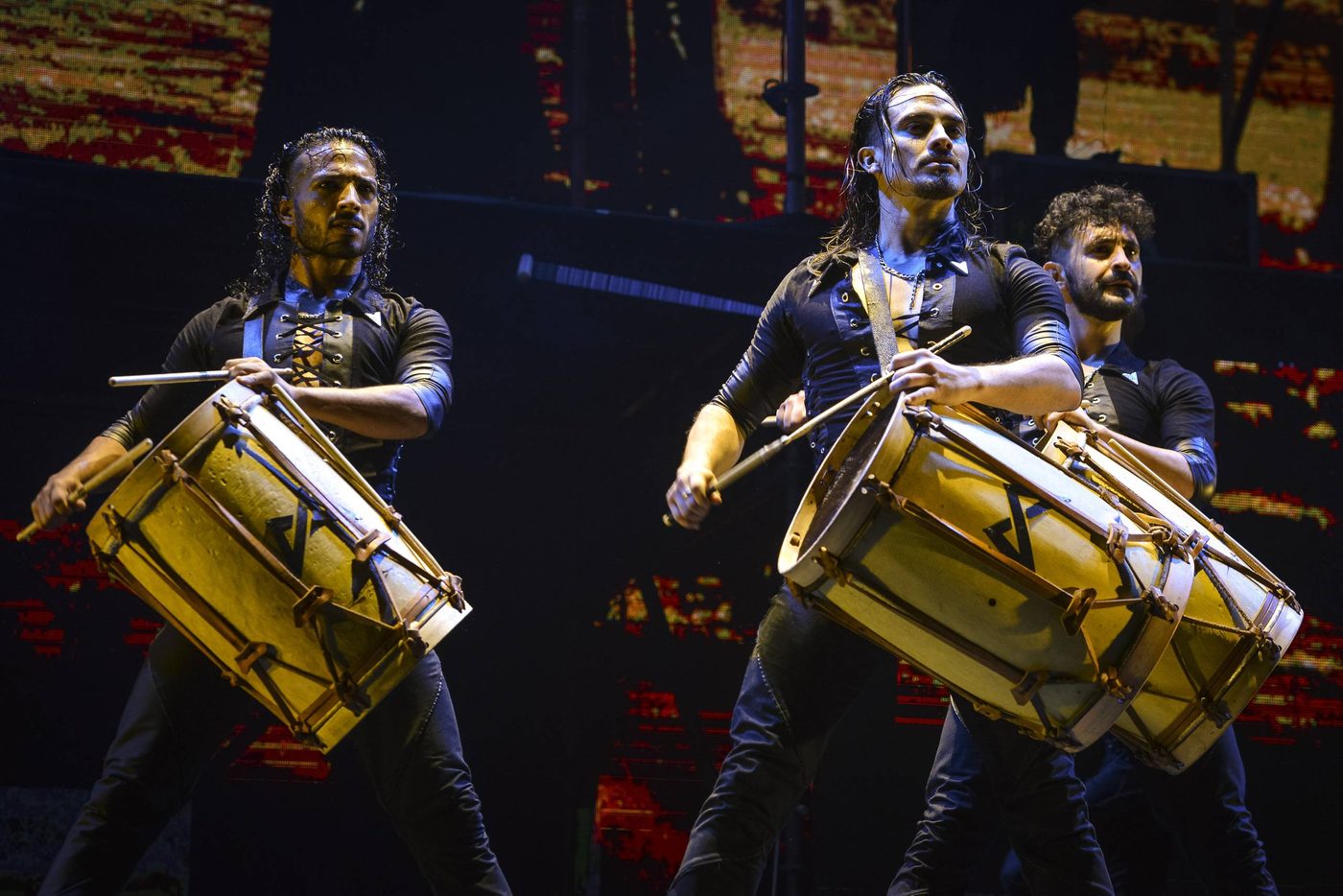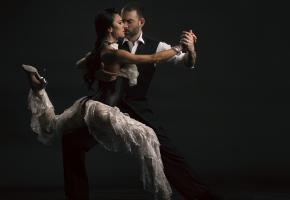Night-time falls, as we gather around the ballroom of the Argentine Ambassador’s palatial residence in Belgrave Square. The chatter in the room eclipses into silence as the drum roll begins. Stomp. The silhouette of the herd of dancers enters from all doors and sprawls across the dance floor. Elegant yet striking, the wild-looking, long-haired, bare-chested gauchos lock eyes with the audience, commanding our attention…
As we huddle around the doorway, the ballroom - with its high ceilings adorned with chandeliers - falls still and empty like the pampas. Clack! The air resounds as the dancers’ boots kiss the ground in synchrony, with crisp, precise movements like Irish dancers. Yet the fiery temperament of the strums of the guitar and high-heeled shoes resemble flamenco. Then, the violin - the protagonist of tango music - amplifies the dramatic and sensuous ambiance.
“Before forming Malevo, I was working with a flamenco group and as a choreographer for Latin pop star, Ricky Martin,” says the group’s director, Matías Jaime. “We have fought throughout the years to give the malambo folklore dance from Argentina its own space on the world stage.”
There are definitely traces of flamenco in the footwork of the malambo, almost a fusion between gypsy and cowboy artistry. Chasing the pulsating drum beat, the dancers gallop around the room in black jeans buckled with leather bridles and biker jackets. “I wear a leather jacket in my day-to-day life offstage but leather is also associated with the countryside in Argentina. I’m also a big fan of rock music as well as folk music. It’s important to create something with which we feel identified.”
Having reached the semi-final of America's Got Talent, Malevo catapulted the traditional malambo folklore dance from Argentina on the world stage.
“The malambo is a folkloric dance originally from the Argentine pampas, or grasslands,” Jaime tells us. “Similarly to tango, we want to transform malambo into a commercially-viable proposal for an international audience without forgetting the roots and traditions of the dance.”
The word ‘Malevo’ itself is taken from Buenos Aires slang from tango (Jaime’s first professional job as a dancer was in tango), and the effect of merging the frontiers of traditional folklore and a modern approach leads to a vibrant spectacle that brings the frontier centre stage and projects rural Argentina to the world with a modern take.
Facundo Villamayor, a young dancer from the province of Formosa in northernmost Argentina, weaves his experience growing up as a farmworker into the performance. “Those in the countryside feel proud of what we have brought to the world. We all come from humble backgrounds in Malevo. We all started dancing when we were under ten years old by following the steps of our family and our classmates.”
Malevo’s performance is a nod to traditional methods of storytelling in the Argentine pampas, transcending from the nineteenth-century gaucho to present-day folk dances. “The malambo is a folk dance which stems from when the gauchos would challenge each other to a contrapunto to try to see who was the most witty and skillful in order to win the public’s admiration.”
Similar to the North American cowboy, the nineteenth-century gaucho lived a solitary life in the Pampas, accompanied by his trusty facón - or knife - and his horse. Pulperías - or taverns - were the main arena for social interaction among the gauchos. There, the frontiersmen on horseback would engage in these so-called contrapuntos, narrating their picaresque tales about life in the open grasslands to guitar music while challenging the wit and courage of their opponent.
“When we dance on stage, we feel the galloping of the horses as we swing the boleadoras in the air.” This weighted weapon was primarily used by the gaucho for ostrich hunting: a popular pastime in the grasslands of Argentina. “Just like the nineteenth-century gaucho, we want to win the public over with our music.”
Dancers wearing 'bombachas' trousers, traditional gaucho attire.
Malevo plays on the gaucho’s role as existing on a frontier between cultures, countries, civilisation and nature, past and present and the limitless horizon of the Pampas. Jaime speaks about the animal element of Malevo, and malambo itself as the feeling of a galloping horse.
Dancing in union with seamless choreography, they break down the 19th-century Argentine statesman Domingo Sarmiento’s idea of the insurmountable frontier between “civilisation and barbarism” and the “gaucho and modern Argentina” through their synchronised melding of ‘animal’ energy with multiple cultural influences reflecting the diversity of Argentina, making this dance best experienced live.
The rather tempered audience of the embassy would soon give way to the more demonstrative punters at West End's Peacock Theatre the following week, where decent English folk went temporarily wild in appreciation of the gorgeously dark and unashamedly macho malambo. It was as if Magic Mike had arrived with a troupe of Latino stallions, and unleashed a spectacle of stomping beasts that no one was expecting. The overt sexuality was somehow given artistic finesse by the quality of musicians - violinist, drumkit and accordion - playing classic tango, Argentine folk, rock and even a tribute to the Beatles. The crowd were in wonderment at the strange and unexpected fusion of music and dance styles.
Back at the Embassy, Malevo took the frontier to the extreme, both literally with the line of the audience only centimetres away from the dancers, as well as by physically expressing the connection between man and nature through their respect for traditional gaucho culture blended with other Argentine traditions. The result is an infectious energy that makes audiences go crazy beyond borders.
















